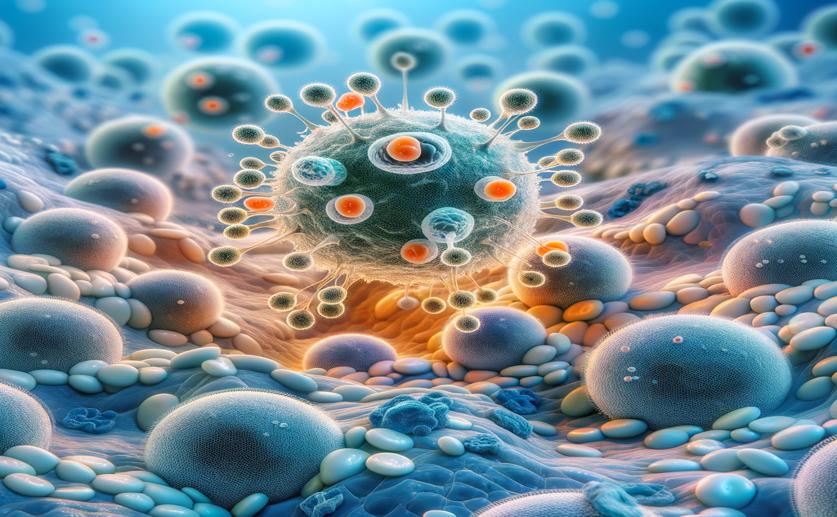
How Cell Fusion Promotes Growth and Invasion in Candida Infections
Jim Crocker
17th May, 2024

Image Source: Natural Science News, 2024
Key Findings
- The study by the Naval Medical University focused on the role of vacuole fusion in the fungal pathogen Candida albicans
- Disrupting genes involved in vacuole fusion led to defects in hyphal growth, especially on solid media
- Large vacuoles, resulting from vacuole fusion, are essential for the mechanical penetration of C. albicans hyphae through solid substrates
References
Main Study
1) The vacuolar fusion regulated by HOPS complex promotes hyphal initiation and penetration in Candida albicans.
Published 16th May, 2024
https://doi.org/10.1038/s41467-024-48525-5
Related Studies
2) Candida albicans Morphogenesis Programs Control the Balance between Gut Commensalism and Invasive Infection.
3) Candida albicans cell-type switching and functional plasticity in the mammalian host.
4) Invasive candidiasis.



 21st April, 2024 | Greg Howard
21st April, 2024 | Greg Howard